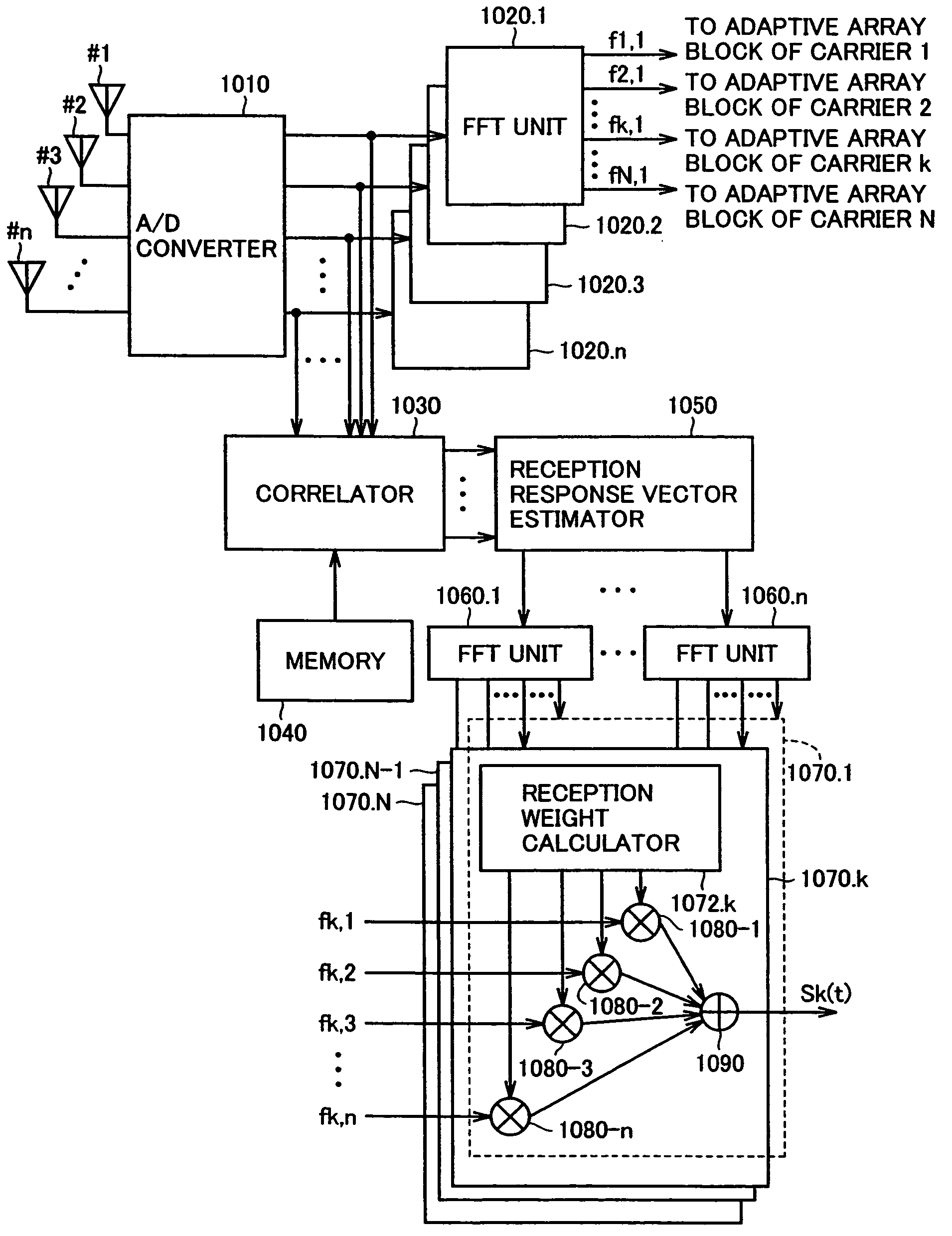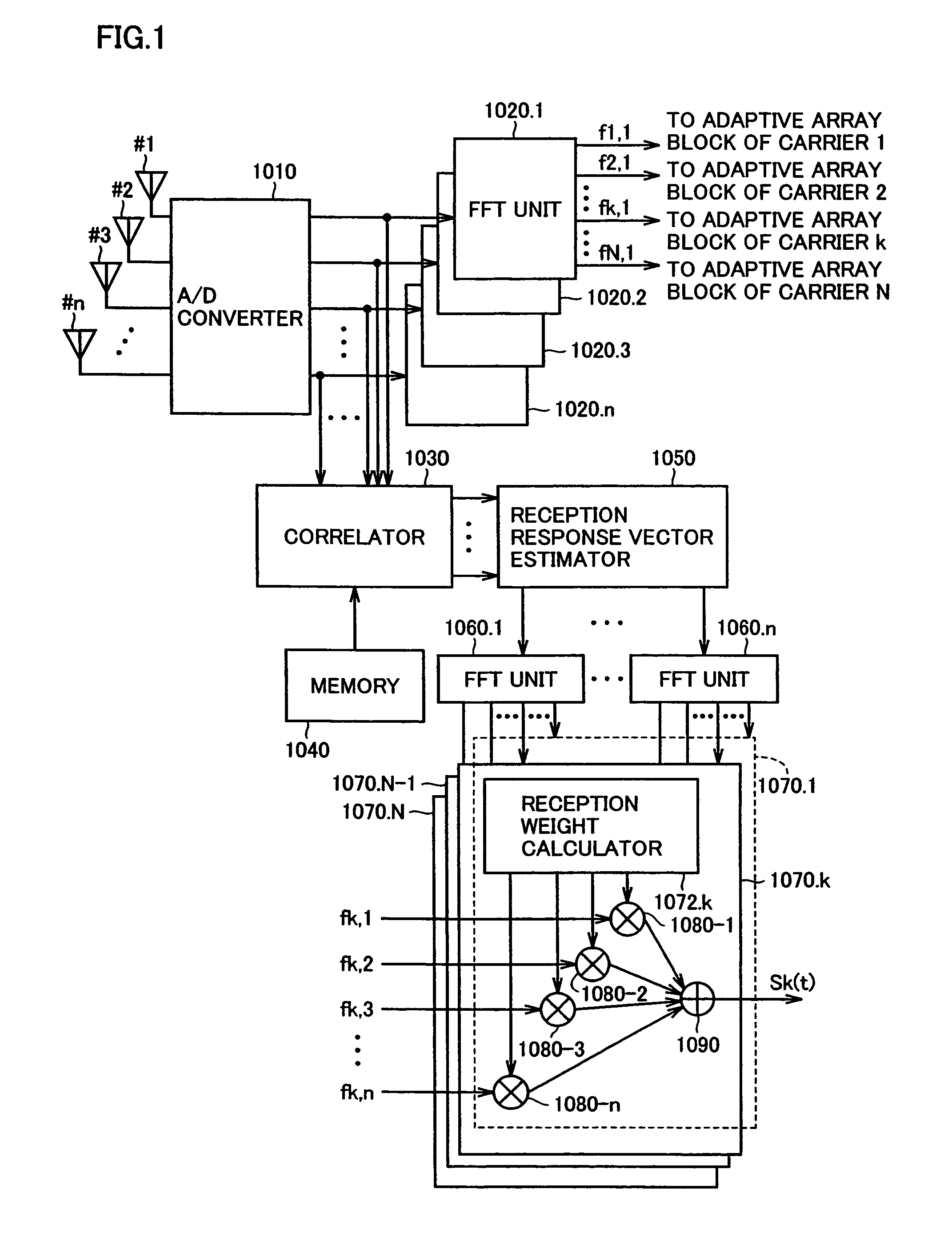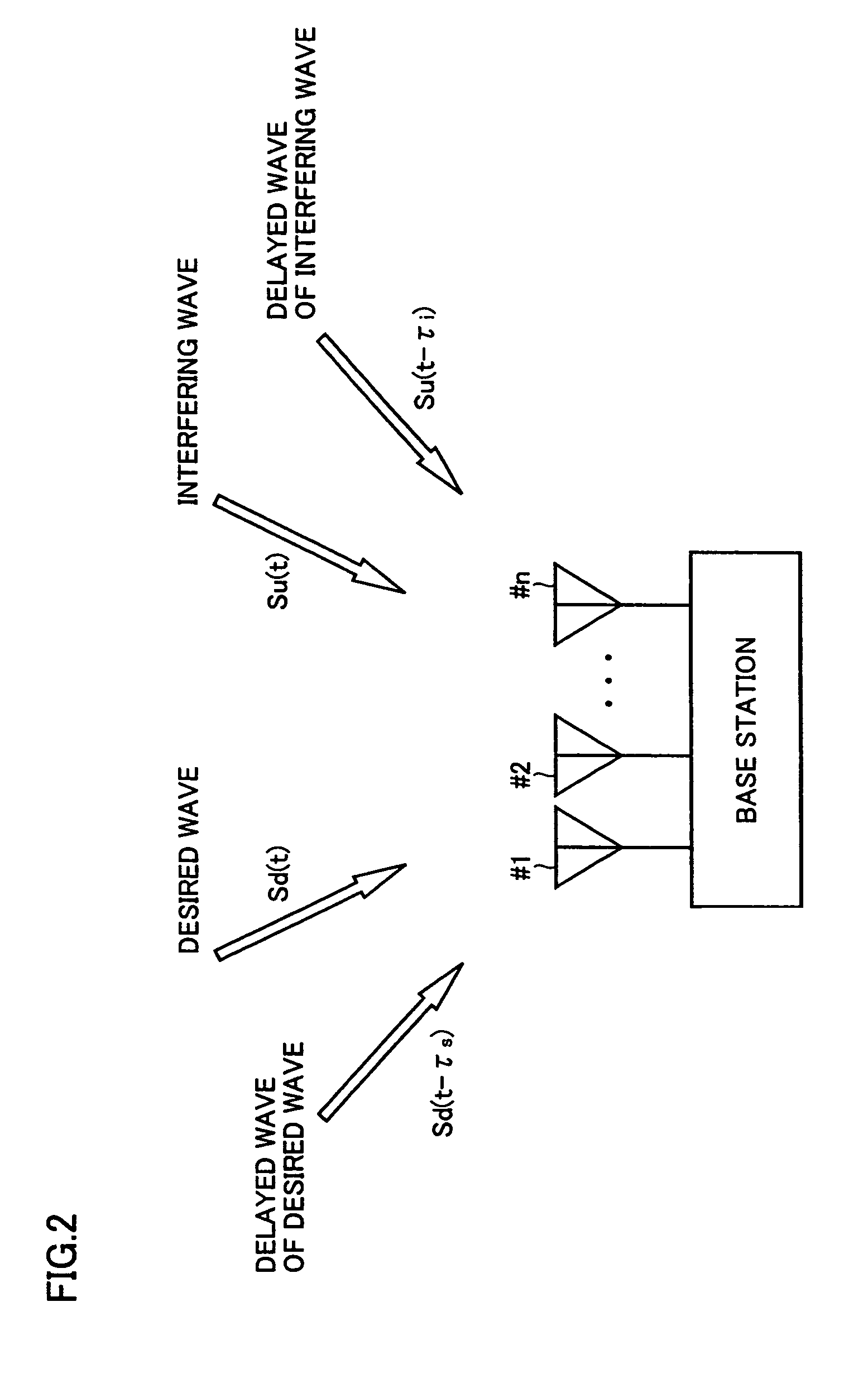Radio apparatus and adaptive array processing method
a technology of array processing and radio apparatus, applied in the field of radio apparatus and adaptive array processing method, can solve the problems of insufficient number of reference signals included for each carrier, the inability to establish directivity of favorable accuracy, and the inability to combine the two schemes
- Summary
- Abstract
- Description
- Claims
- Application Information
AI Technical Summary
Benefits of technology
Problems solved by technology
Method used
Image
Examples
first embodiment
[0133]FIG. 1 is a schematic block diagram to describe a configuration of adaptive array base station 1000 according to an embodiment of the present invention. Adaptive array base station 1000 of the present invention transmits and receives a signal having directivity by adaptive array processing with respect to a mobile station such as a user's terminal. It is to be noted that adaptive array base station 1000 can also transmit and receive a signal with respect to a mobile station through the spatial division multiple scheme as will be described afterwards.
[0134]Referring to FIG. 1, adaptive array base station 1000 includes an array antenna formed of n (n: natural number) antennas, an A / D converter 1010 to conduct detection and analog-digital conversion on signals received from array antennas #1-#n, FFT units 1020.1-1020.n provided for respective n antennas, receiving outputs from A / D converter 1010 to separate and extract signals for respective carriers for corresponding antennas, a...
second embodiment
[0231]In the first embodiment, a complex response of a desired signal and a complex response of an interfering signal were obtained in accordance with a method described with reference to equations (22)-(26) as an operation of reception response vector estimator 1050.
[0232]In the case where there is no overlapping between the reference signal section of a desired signal and the reference signal section of an interfering signal, the method described in accordance with equations (22)-(26) does not exactly apply.
[0233]The second embodiment is directed to a method of obtaining a complex response of a desired signal and a complex response of an interference signal applicable even in such a case.
[0234](Estimation of Response of Desired Signal)
[0235]To obtain the complex response of a desired signal, an evaluation function J2 applied by the following equation (35) is employed. Unless stated otherwise, the notations of the following equations are similar to those of equations (22)-(26).
[023...
PUM
 Login to View More
Login to View More Abstract
Description
Claims
Application Information
 Login to View More
Login to View More - R&D
- Intellectual Property
- Life Sciences
- Materials
- Tech Scout
- Unparalleled Data Quality
- Higher Quality Content
- 60% Fewer Hallucinations
Browse by: Latest US Patents, China's latest patents, Technical Efficacy Thesaurus, Application Domain, Technology Topic, Popular Technical Reports.
© 2025 PatSnap. All rights reserved.Legal|Privacy policy|Modern Slavery Act Transparency Statement|Sitemap|About US| Contact US: help@patsnap.com



